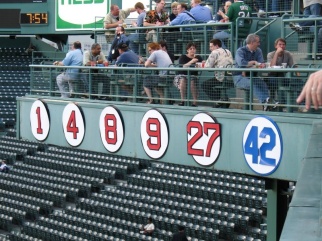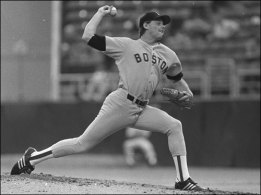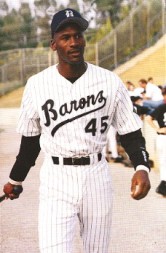A couple of years ago, I had the chance to attend a pitching clinic that Jonathan Papelbon gave for kids. My eldest son, who was about 8 at the time, was one of his 40-or-so students that day. The night before the clinic, Pap had blown a save against the Yankees, so we were all a little worried about the mood that he would bring to the clinic. And he did look exhausted and beaten down, but he was tremendous with the kids, teaching them a lot of important pitching basics and spending some one-on-one time with all of them. And after the clinic, he stuck around to sign autographs for the kids and to answer all of their questions.
Pap said a lot of great things that day — things that a parent really wants his son to hear from an all-star major leaguer — but what I remember most was what he told the kids about winning. Someone asked him about how he bounces back after a painful loss to the Yankees, and he went off on a philosophical rampage. “Hey, I feel bad because I let my teammates down. But you young kids, you need to remember that playing baseball is supposed to be all about fun. Winning and losing — it really doesn’t matter when you’re young, as long as you’re having fun.” He went on to say, “Now, when you start getting paid to play, winning becomes the main thing. But not until you get to the pros. And you all have a long way to go ’til then. So don’t get all caught up in winning and losing. Remember, baseball is all about having fun.” It was a message straight from his heart, almost like he wished he could go back to those days when fun was the main goal of pitching – not beating the Yankees, not making a living.
This past summer, my son played on a summer baseball team of very good 9/10 year-olds. I was one of the coaches. We had practices or games perhaps 4-5 nights per week, and we ended up going 20-2-1 and winning the league championship on the last day of the season. At the end of the championship game, we presented the kids with their championship trophies and they all felt really marvelous. All of us coaches high-fived and embraced – after all, we were champion coaches, and we had helped to give our children and their teammates the unique feeling of being champions (plus, we had successfully avoided the uncomfortable feeling of coming oh-so-close and then losing).
I received congratulations from many people for winning it all – parents of our players, other coaches in the town, and some close family and friends who had followed my son’s team’s season. Being the last team standing is just such a rare achievement, and it’s a fantastically simple, no-nonsense way to evaluate the success of a team’s season.
But the success of our season shouldn’t be defined only by our win-loss record or the fact that we won the league championship. Winning was the goal, but it was never the point, and the allure of winning makes this easy to forget.
The point was, as Papelbon said, having fun. The point was improving young baseball players’ physical skills. The point was teaching them how to think – before the game and in every game situation. The point was teaching kids the value of practicing in the right way. The point was teaching them to play as a team. The point was teaching them to never give up, and to bounce back from disappointing at-bats, plays, or games. The point was improving their resilience and focus. The point was developing leaders. The point was teaching kids to have the courage to dream about winning but to avoid becoming attached to that outcome. The point was teaching them to cheer for each other and keep each other “up” at all times. The point was teaching them to stay loose and to smile. The point was giving kids an experience, through a series of practices and games, that would not only give them joy today — for joy’s sake — but also help them to grow into happier, more self-confident people, better equipped to face challenges in the future.
We coached with these objectives in mind all summer, and this is why I’m proud of our team’s season. The goal of winning simply gave us a context for teaching all of these other vastly more important lessons.
Lots of coaches achieve these objectives with their youth athletic teams, but fail to win the championship or even to have a winning season. And, I fear, plenty of youth athletics coaches “win it all” and point to that accomplishment as justification for everything they did — even though their coaching methods may have totally missed the point of youth athletics.
So I have my championship trophy, but its value isn’t its inherent symbolism of our team’s ability to score more runs than almost every other team. The value of the trophy — to me — is in the memories it holds of the players’ happy afternoons and evenings playing the wonderful game of baseball, and in my son’s and his teammates’ evolution as competitors, as teammates, and as human beings.

















































